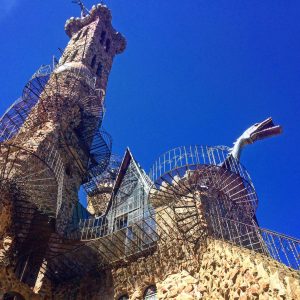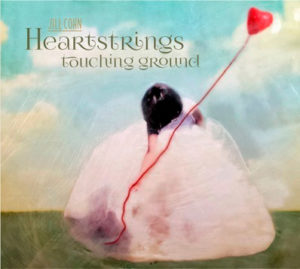By John Mattingly
Ducks are smart, capable of deductive reasoning, with an intelligence quotient equal to donkeys. Many are surprised by this, but it is worth remembering that mammals with four legs require a lot of brain space to regulate locomotion, whereas ducks have no complicated considerations when it comes to gliding effortlessly across water. So even though the duck brain is small, most of it is dedicated to the pursuit of life’s most persistent needs and pleasures.
A couple of years ago, I was given ten ducks, each about the size of a tennis ball. I had a pond around an artesian well and turned them loose, not knowing if they would survive, and not knowing which were males and which females. Ducks don’t express their sexuality until they feather out, at which point male ducks have a small, curled feather at the top of their tail feathers, whereas females have two crossed tail feathers.
Repeating my history with goats – where I started with the odd goat and ended one morning looking out the window at nearly 500 goats – the ten ducks, six male and four female, not only survived, they began to reproduce. The most prolific hen hatched 28 chicks in two settings, and the other three hens hatched 37 chicks in multiple settings.
Sixteen of the chicks died from raptor snatches or in storms, mostly from the wind washing them up. On several occasions, two hatches mingled prematurely and did not get proper attention from their respective hens, and thus perished. Nevertheless, the number of ducks in the pond grew somewhat exponentially. At this rate, a simple calculation suggested that by 2020 there will be well over a thousand ducks.
[InContentAdTwo] The solution to this pending population explosion seemed obvious: dig more ponds, prompting the question: why keep ducks? The quick answer is: with ducks around, there are very few mosquitos. Apart from this benefit, the Joy of Ducks is overwhelming when you spend an afternoon observing them in action as they interrogate the bottom of the pond for grubs and bugs, ducking down with feet and tail wagging furiously above the surface as they bore into a tasty morsel.
They also spend a lot of time preening, using their bill to pinch out bugs and itches but also spreading a secretion from a gland on their lower feathers, which gives them a waxy quality that insulates them in the winter. The artesian water in the pond is about 65 degrees and never freezes, so even when it is twenty below, the ducks are in relatively warm water.
A hen will treat her chicks in their infancy with her secretion. This is why it is very difficult to incubate duck eggs. We tried it. The chicks that hatched in the incubator proved to be weak and slow-witted, in spite of heat lamps, special feeding, and considerable attention. The best approach here, we concluded, is to gather the eggs early in the spring when the chicks have less chance of survival, eat those eggs, and then let the hens set starting in mid-May.
Duck eggs from healthy ducks are hard to crack open, mostly yoke, and totally delicious. Soft boiled and eaten with a dash of thyme, salt and pepper is unlike any other egg experience. Likewise with an omelet rolled up with early asparagus and last year’s shallots. And baking with duck eggs is rich.
The only problem with this handy solution is that ducks do not appreciate humans taking their eggs. After gathering from a nest on a chilly morning in late February, the hen will throw quite a fit, and then, progressively, she will become better at hiding her eggs such that in late March a nest of thirty eggs will be discovered due to their overflowing preponderance, or, a dozen chicks will suddenly appear on the pond, squirting around under the watchful eye of their mother. Approach these chicks at your peril. Even though duck bills are not especially dangerous, a duck attack is so startling as to be disarming. They hiss like a snake and fly right at you.
Ducks raised this way are very smart when it comes to predation. Perhaps because they were thrust into a survival situation and survived, they trust no one and no thing, always staying within a flying leap of water. When threatened, they swim into a tight circle ready to give any attacker a challenge they will never forget. Even though we know coyotes and raccoons have been around, none of the original ten ducks has been eaten, nor have any of the chicks hatched from the original ten. None of the ducks we hatched in the incubator survived when released in the pond.
This winter, a flock of five wild ducks lit down on the pond among our resident ducks. They did a great deal of head-nodding among and between them, a way ducks communicate affection, superiority, or a desire to mate. The wild ducks tried to eat the corn spread out for the resident ducks, but preferred poking into the banks of the pond for roots. The Five visited intermittently for about two months before taking off to find a less-human nesting spot.
On the other end of the spectrum, we tried to make a pet of a duck hatched in the incubator. This particular duck showed more affection than most ducks. She nested at our feet while we sat in chairs observing the resident ducks. Ducks don’t make very good pets, however, mostly because a duck out of water is really a duck out of water. And once they feather out, they are seldom willing to be held and protest vehemently when picked up. And they are messy, and they stink. So, ducks are best in water, coexisting with humans on land, humans who appreciate the probity, elegance, and verisimilitude of the duck.
Keep in mind: if you don’t see a duck in the room, you are probably the duck.
John Mattingly cultivates prose, among other things, and was most recently seen near Moffat.



